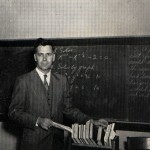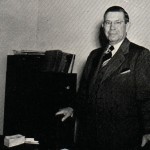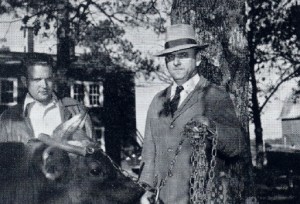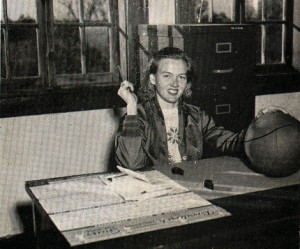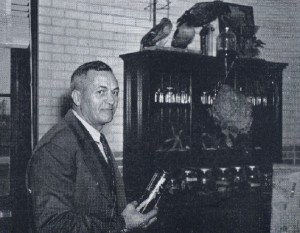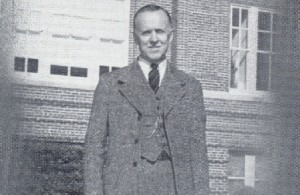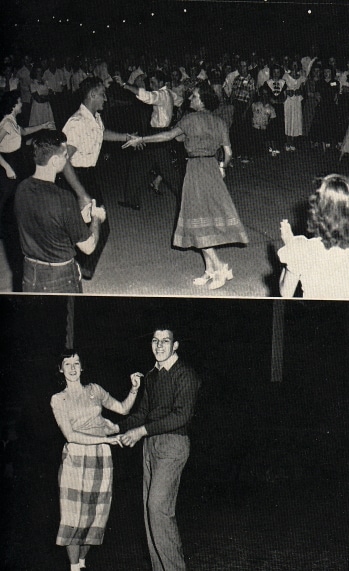(Excerpted from James F. Willis, Southern Arkansas University: The Mulerider School’s Centennial History, 1909-2009, pp. 170-71)
(Additional photos available by selecting blue underlined names)
Veterans and other new students usually encountered new instructors in these years. Something of a generational change occurred as older faculty retired or did not return from the war. In 1946–47, of thirty-four faculty and staff, eighteen were new, and only eight had served before 1944 including math instructor Calvin Wetzig whose tenure had begun in 1938. Several of the new faculty would join Wetzig, Milton Talley, and Orval Childs in becoming another stable core of teachers and staff who would serve the school for decades. Among these new faculty were Bruce Bevins, business; Tom D. Bowles, engineering; Florrie B. Franklin, home economics; Margaret Harton, speech and theater; Tabbie Mae Moore, math; Richard Oliver, band; Alvarene Peace, business; Shirley Grear Smart, music; Auburn Smith, physical education; and Stella Smith, education. Of this group, Kathryn Smith Brown, physical education, would teach the longest—50 years—a record unmatched by any other professor.
Brown (then Smith) was unmarried and at nineteen years of age was indistinguishable from the young women she taught. She had graduated from high school early and earned a degree from Louisiana Tech College in a wartime program to accelerate graduation. With several other single female teachers, she lived in Jackson Hall until she married Ivan Brown in 1948. She ate in the cafeteria in Nelson Hall across the street and listened to and danced to the same “jitterbug” music her students did. In fact, she organized an extracurricular class that met every Monday night from 6:30 to 7:30 p.m. in the armory where she taught young men and women how to dance the latest steps.
The high quality of instruction that had marked the 1930s was maintained. Magnolia physician Dr. John Ed Alexander Sr., class of 1947, later declared, “I didn’t have any better teachers at Fayetteville that I had at Magnolia A&M.” Premed studies in the biology classes of William C. Munn and in chemistry with Sage McLean, he said, provided an excellent foundation to complete his degree at the university and subsequently to study medicine.
In these years, the faculty had one scholar of note, Dr. Samuel Denny Smith, the school’s only Ph.D. He held degrees from Davidson, Princeton, and the University of North Carolina. He was the author of the first full-length study of African Americans who served in the U.S. Congress during Reconstruction following the Civil War. The University of North Carolina Press published his book, The Negro in Congress, 1870–1901 (1940). It was a well-researched study, but it did reflect, later generations of scholars would decide, the paternalistic racial attitudes characteristic of the era. Harold Fincher, class of 1946, enjoyed Smith’s classes. Fincher declared that he was an excellent teacher although many students found him too difficult and somewhat “dry.”

